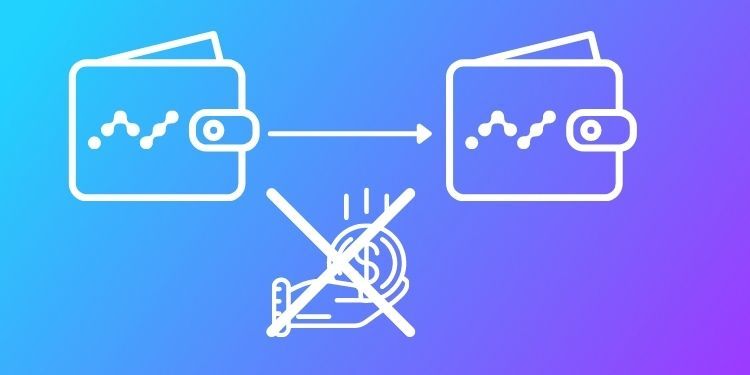In a previous post, I discussed Why Monero, entailing what made Monero stand out in the crypto ecosystem and what benefits it provides. Nano is another cryptocurrency I find very exciting, but for vastly different reasons to Monero. This post will discuss how Nano takes a leap to improve blockchain technology and why it could be a fantastic cryptocurrency for day-to-day transactions.
What Nano Provides
Fee-less Transactions

To send a transaction in the Nano network, there are no fees. There is a small proof of work that must be performed to make a transaction, but this is to mitigate spam (see "Spam Prevention" below). One could speculate that it is only because demand has already grown in the cryptocurrency marketplace that a currency could exist that doesn't pay out fees or block rewards to node operators. The only incentive for Nano node operators is that by running a node, they help keep the network decentralized and healthy. Even given these minimal incentives there are 112 online full nodes active today.
This opens up a whole new class of microtransactions not practical in traditional fiat payment methods and many cryptocurrencies. Many traditional payment processors will charge fees like "3-5% + 30c per transaction". It's not unheard of for median Bitcoin or Ethereum transactions to cost over 10 USD in fees. With no fees in Nano, you can send someone a transaction that is a fraction of a cent and not worry you are going to be losing out on fees.
Historically both in fiat and crypto ecosystems, these high fees cause business and application developers to create an off-chain system for managing smaller transactions. Think gambling chips at a casino, topping up a card at a gaming arcade such as Timezone or Chuck E. Cheese or making trades on a centralized crypto exchange. With Nano, you can create systems where these small transactions are all settled instantly on-chain.
Instant Transactions

When a Nano transaction is sent to the network, it is frequently confirmed in sub-second times. No waiting for a Bitcoin transaction to sit in a mempool for minutes (or hours), not waiting days for your credit card transactions to settle, but an instant transaction confirmed by the Nano network.
This is a cryptocurrency with a true claim to being used at "point of sale" speeds, where you need to confirm a transaction instantly so you can serve the next customer. It also unblocks peer-to-peer transactions like second-hand purchases on gumtree/craigslist, where you don't want to wait around for 10 minutes for your bitcoin transaction to be confirmed before walking away.
High Transaction Throughput

Nano manages a significantly higher number of transactions per second (291 on a beta network test) than Bitcoin (4.6). It also rivals traditional platforms like PayPal (476 transactions per second on average from 374B transactions per quarter).
This extremely high throughput means the Nano network is suitable for scaling to high usage, something Bitcoin has struggled with at many points of high demand ($30 transaction fees and hours-long wait times).
How Nano Works
Per-Wallet Chains

Nano works differently from the majority of other blockchains in the way that there is a blockchain created for each user in the network to keep track of. The security of each chain is created using traditional public-private key cryptography, where the owner of a wallet holds the private key to that wallet. By securing each chain with a private key, only the owner is allowed to append new transactions to their chain.
Because there is a separate chain for each wallet on the network, transactions can occur instantly, with blocks containing only a single transaction. When a sending transaction is signed and sent to the network, it can immediately be verified by Nano network nodes. The network nodes are responsible for verifying the transaction had the correct signature and that the funds were available to be spent from that wallet.
Consensus Mechanism

To prevent double-spending from a malicious actor in the network, Nano uses a consensus approach called Open Representative Votion (ORV). The basics of ORV are that:
- Wallets can give their "voting power" (based on their account balance) to a designated node in the network.
- Nodes votes on the authenticity of a transaction (i.e. it isn't a double spend, the sender signed the transaction, etc)
- Once Nodes witness enough of the network voting weight (66%) supporting a transaction, it is confirmed and cemented in the chain
You can read more about how ORV works in the docs.
Spam Prevention

There is a small proof of work the sender must provide when making a transaction to mitigate spam on the network. A website exists that can be used to test out the time it would take your device to generate the proof of work, but it's negligible (<1 second on Mac M1, ~10 seconds on 3-year-old flagship phone hardware). This value can also be precomputed by your wallet so that when you are ready to send a transaction you already have a proof of work ready to go. This pre-generation on the client-side allows the Nano network to still maintain sub-second transaction times.
How Does Nano Compare to Similar Currencies?
Stellar (XLM)

In a very broad sense, Nano is to Bitcoin what Stellar is to Ethereum. Nano is a pure currency, whereas Stellar is a network used for keeping track of different "tokens" as part of its network.
They share a similar feature in that Stellar is also very fast at confirming transactions (3-5 seconds) compared to Nano (<1 second). Stellar also costs more to transact with, 0.0003 US cents at the time of writing, a negligible amount but non-zero nonetheless.
One point of contention in the Stellar network is the large endowment of Lumen supply kept for the development fund. Almost 1/6th of the total supply to be created is controlled by the one centralized body. At current prices, they have endowments for the next 2 years of USD 1B per year for the centralized fund. In the Nano network, almost all of the Nano was distributed or burnt, with only 300k Nano (USD 1.6M, 0.2% of total supply) kept for the developer fund.
Regarding the decentralization of the two networks, 45 full Stellar nodes are currently running compared to 112 Nano nodes.
Ripple (XRP)

XRP is similar in transaction times to Nano, taking 3-5 seconds for a transaction to reach finality. There is also a small fee associated with an XRP transaction, amounting to 0.001 US cents, once again quite negligible but also not zero.
The biggest issue most folks in the cryptocurrency community have with XRP or Ripple Labs (the company behind XRP) is their goal of serving the traditional financial systems. For many in the cryptocurrency space, crypto is a rebellion against traditional financial systems, and a coin built to serve banks doesn't seem to achieve that purpose.
Another potential concern, especially for XRP as a cryptocurrency is that Ripple Labs control over half of the total supply of XRP both directly and through an escrow that releases over time.
As far as decentralization goes, there are 89 fully synced XRP nodes at the time of writing, compared to 112 Nano nodes.
IOTA

One more cryptocurrency that has fast and feeless transactions is IOTA. Transactions on the IOTA network typically take 10-12 seconds, much longer than Nano but also fast enough in many use cases.
The real differentiator in IOTA is the applications you can build on top of it because you can send up to 1kb of arbitrary data along with a transaction. This allows IOTA to head towards its mission of powering the Internet of Things / Machine -> Machine transactions. Nano on the other hand tries to do only one thing, value transfer.
As of writing, IOTA is a centralized cryptocurrency, with a single "coordinator" node. The team behind IOTA have created a version that doesn't depend on the coordinator node but it is not yet in production on the main network. This could be a deterrent for some users who prefer purely decentralized cryptocurrencies for their resilience.
Conclusion
Nano is a cryptocurrency that is truly groundbreaking in its speed and cost-effectiveness. These features make Nano an excellent cryptocurrency for many use cases, one that is far more suited to be a quick payment system than the dominant cryptocurrencies. With a market cap of only USD 13M (#63 in the non-token coin rankings), there is plenty of room for growth, however, due to its design it is much more suited for a method of exchange rather than a store of value like Bitcoin is.
Disclosure: I have ~$5 worth of Nano which I received when someone purchased a star on nightskycrypto.com.

